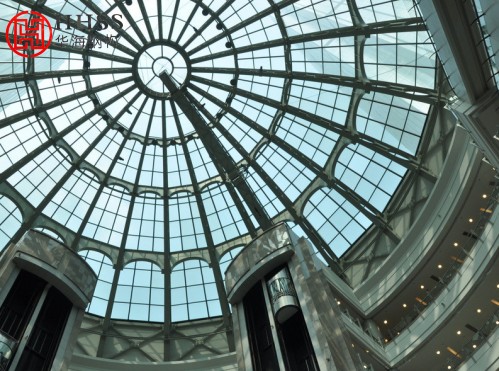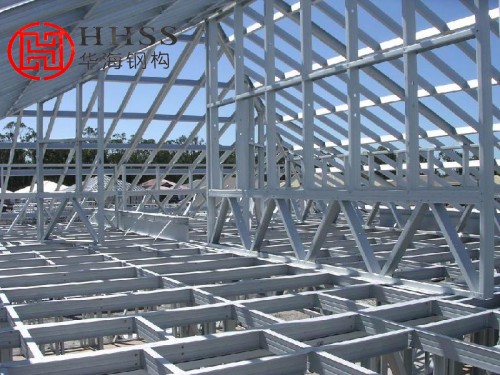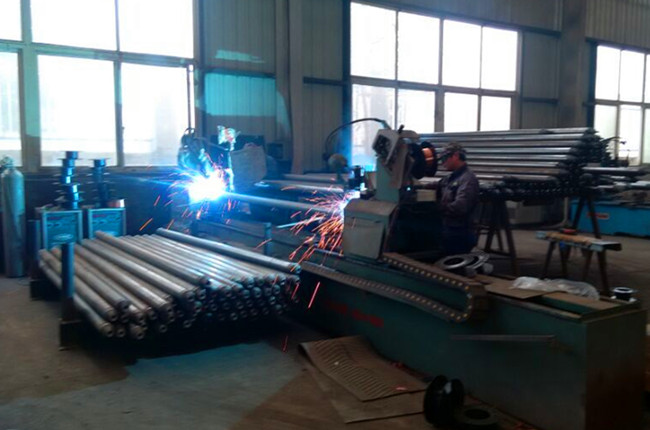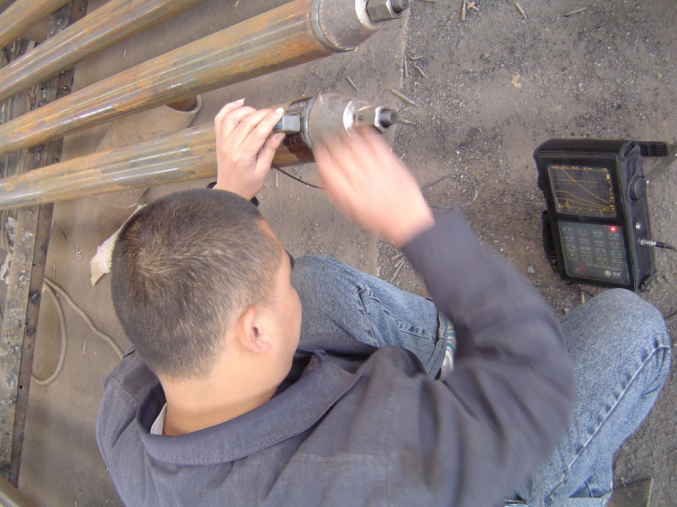Grid structure characteristics
更新时间:2021-02-05 09:53:42•点击:41538 • Grid Knowledge
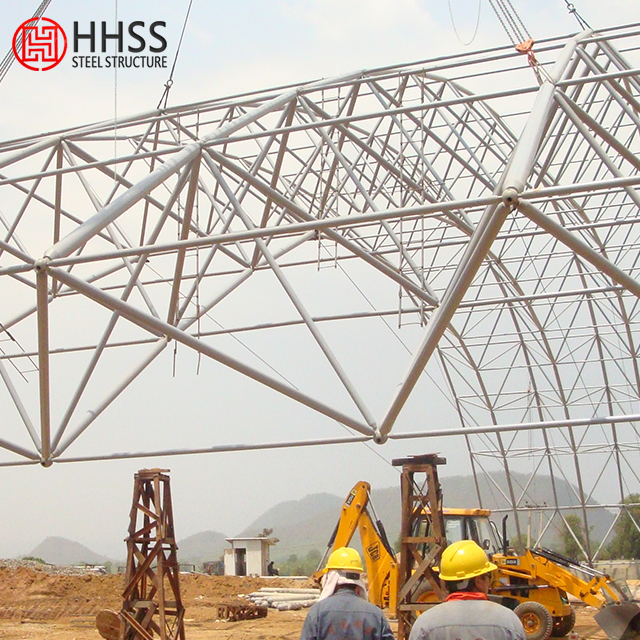
Grids are used in sports venues, convention and exhibition centers, cultural facilities, transportation hubs and even industrial plants that require large spans and large spaces, all of which are traces of spatial structure. The advantages of the grid structure are small amount of steel, good integrity, quick production and installation, and can be used in complex plane forms. Suitable for structures with various spans, especially for complex plane shapes. The intersecting rods in these spaces support each other and organically combine the force-bearing rods with the supporting system, so the materials are economical.
The grid structure has become one of the more common new structures in the modern world. my country began to research and adopt it in the 1960s. In recent years, due to the rapid development of electronic computing technology, the calculation problem of the high-level statically indeterminate structure of the grid structure has been solved, which has promoted the grid structure in terms of type and practical engineering application. , The development is very fast.The thermal insulation material used in the steel structure grid is mainly glass fiber cotton, which has a good thermal insulation effect. The use of thermal insulation boards on the outer wall effectively avoids the "cold bridge" phenomenon of the wall and achieves a better thermal insulation effect. The thermal resistance of R15 insulation wool with a thickness of about 100mm can be equivalent to that of a brick wall with a thickness of 1m. The assembly of the grid structure is generally carried out on site. Before leaving the factory, the bolted ball joint grid should be pre-assembled to check the size and deviation of the parts. The assembling of the grid frame should be assembled according to different construction and installation methods, using separate assembly, quick assembly or overall assembly. The grid assembly should be carried out on a flat rigid platform. When assembling the grid of welded hollow spherical nodes, the assembly sequence should be correctly selected to reduce welding deformation and welding stress. According to most domestic engineering experience, the assembly and welding sequence should develop from the middle to the two sides or the surroundings, preferably from the middle to the two sides. Development, because when the net frame is assembled forward, the ends and the front can be freely contracted. After welding a section of steel structure products, the size and geometry can be checked once, so that the welder can make adjustments during the next tack welding. Avoid forming a closed circle during the assembling of the grid. If welding is performed in the closed circle, the welding stress will be great.
The grid structure can be divided into double-layer plate-type grid structure, single-layer and double-layer shell-type grid structure. The members of the plate grid and the double shell grid are divided into upper chords, lower chords and webs, which are mainly subjected to tension and pressure. The nodes of single-layer shell-type grids are generally assumed to be rigidly connected and should be calculated according to the finite element method of rigid-connected rods; double-shell grids can be calculated according to the finite element method of hinged rods. Both single-layer and double-layer shell grids can also use the pseudo-shell method to simplify calculations.
The rods of the single-layer shell-type grid not only bear the tensile force and pressure, but also bear the bending moment and shear force. At present, most of the grid structures in China use plate grid structures. The grid structure is a kind of spatial grid structure. The so-called "spatial structure" is relative to the "planar structure", which has the characteristics of a three-dimensional effect. Since the advent of the space structure, it has been welcomed by people for its efficient stress performance, novel and beautiful form and quick and convenient construction. The spatial structure can also be seen as the expansion and deepening of the planar structure. The grid structure is a spatial rod system, the rods mainly bear axial force, and the cross-sectional size is relatively small.
According to different shapes, the grid structure can be divided into double-layer plate-type grid structure, single-layer and double-layer shell-type grid structure. The members of the plate type grid and the double-layer shell type grid are divided into upper chord, lower chord and web members, which mainly bear tension and pressure; the members of the single-layer shell type grid, in addition to bear the tension and pressure, also bear Bending moment and shear force. At present, most of the grid structures in China use plate grid structures.
According to actual use: the steel structure is a spatial structure formed by connecting multiple rods through nodes in a certain grid form. It has the advantages of space stress, light weight, high rigidity, and good seismic performance; it can be used as a house for buildings such as stadiums, theaters, exhibition halls, waiting halls, stadium stands, hangars, two-way large-pillar grid structures, and workshops. cover.
The grid frame has the characteristics of light weight, high strength, good overall rigidity, and strong deformability. At present, the demand for the grid frame is also increasing. The structural roof is composed of cold-formed thin-walled steel component system, and the steel frame is made of super anti-corrosion and high-strength cold Manufacture of rolled galvanized sheet, effectively avoiding the influence of corrosion of steel sheet during construction and use, and increasing the service life of light steel components. The structural life can reach 100 years.
Grid frames are mainly used in large and medium-span public buildings, such as stadiums, hangars, clubs, exhibition halls, and waiting halls. Small and medium-sized industrial plants have also begun to be promoted and applied. The larger the span, the more significant the advantages and economic effects of adopting this structure. Grid structure The plate grid structure is divided into three types according to the composition form: the first type is composed of a plane truss system, with two-way orthogonal orthographic grid, two-way orthogonal diagonal grid, and two-way oblique cross. There are four types of grid racks and three-way grids; the second type is composed of quadrangular pyramid units, including positive quadrangular pyramid grids, positive evacuated quadrangular pyramid grids, oblique quadrangular pyramid grids, and checkerboard quadrangular pyramid grids. There are five forms of frame and star-shaped quadrangular pyramid grid; the third category is composed of triangular pyramid units, including three forms of triangular pyramid grid, evacuated triangular pyramid grid and honeycomb triangular pyramid grid. Shell type grid structure is divided into cylindrical shell type grid frame, spherical shell type grid frame and hyperbolic parabolic surface shell type grid frame according to the shell surface form. The grid structure is divided into steel grids, reinforced concrete grids and composite grids composed of steel and reinforced concrete according to the materials used. Among them, steel grids are more commonly used.
Recommended Reading
-
Steel structure grid advantage
2021-03-11 16:10:29•168166 次
-
Force analysis of grid installation
2021-03-11 15:45:37•154375 次
-
Grid rod processing
2021-03-10 09:48:09•133682 次
-
Slurry jumping of three-dimensional rotary vibrating screen in grid structure
2021-03-09 11:23:53•137718 次
